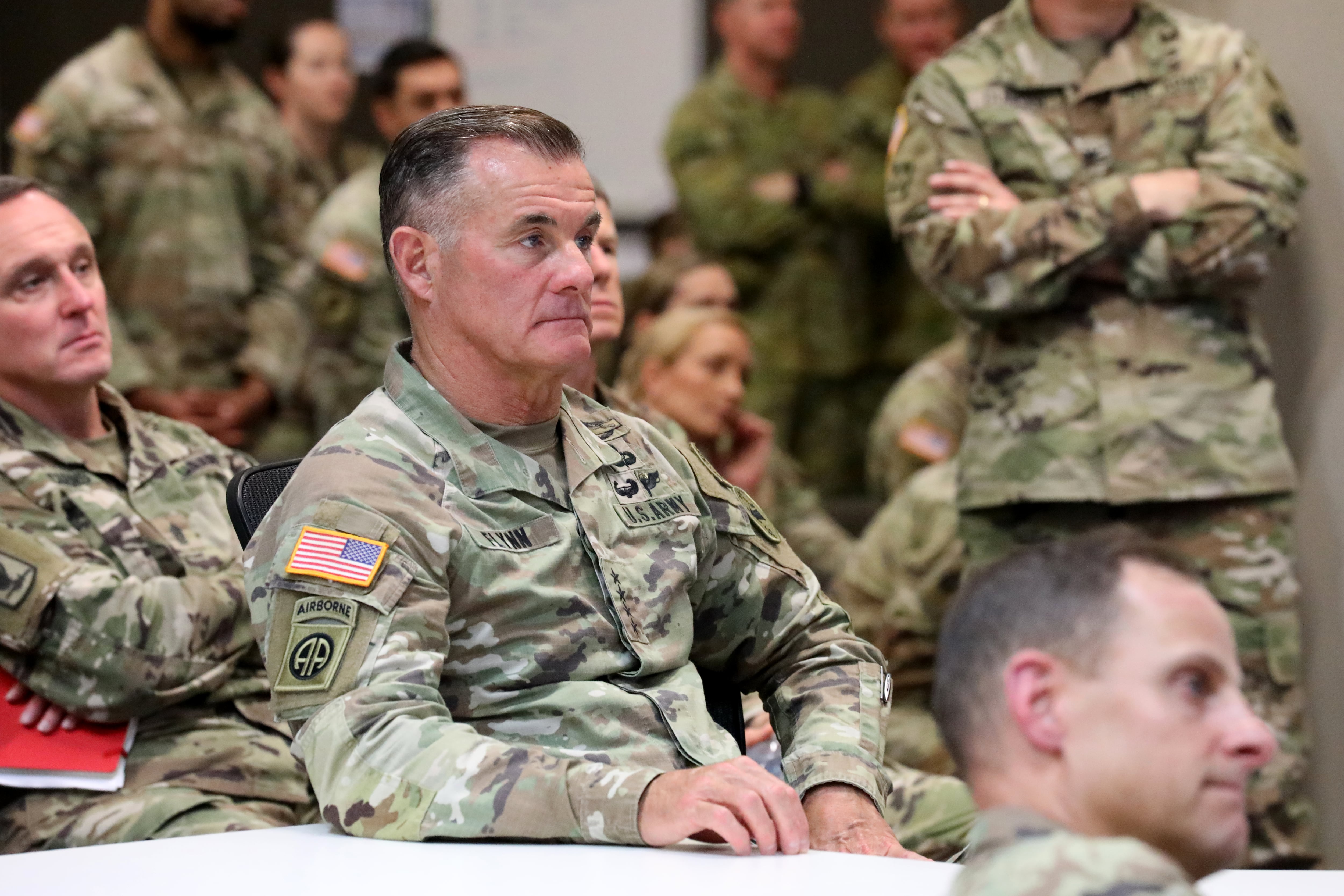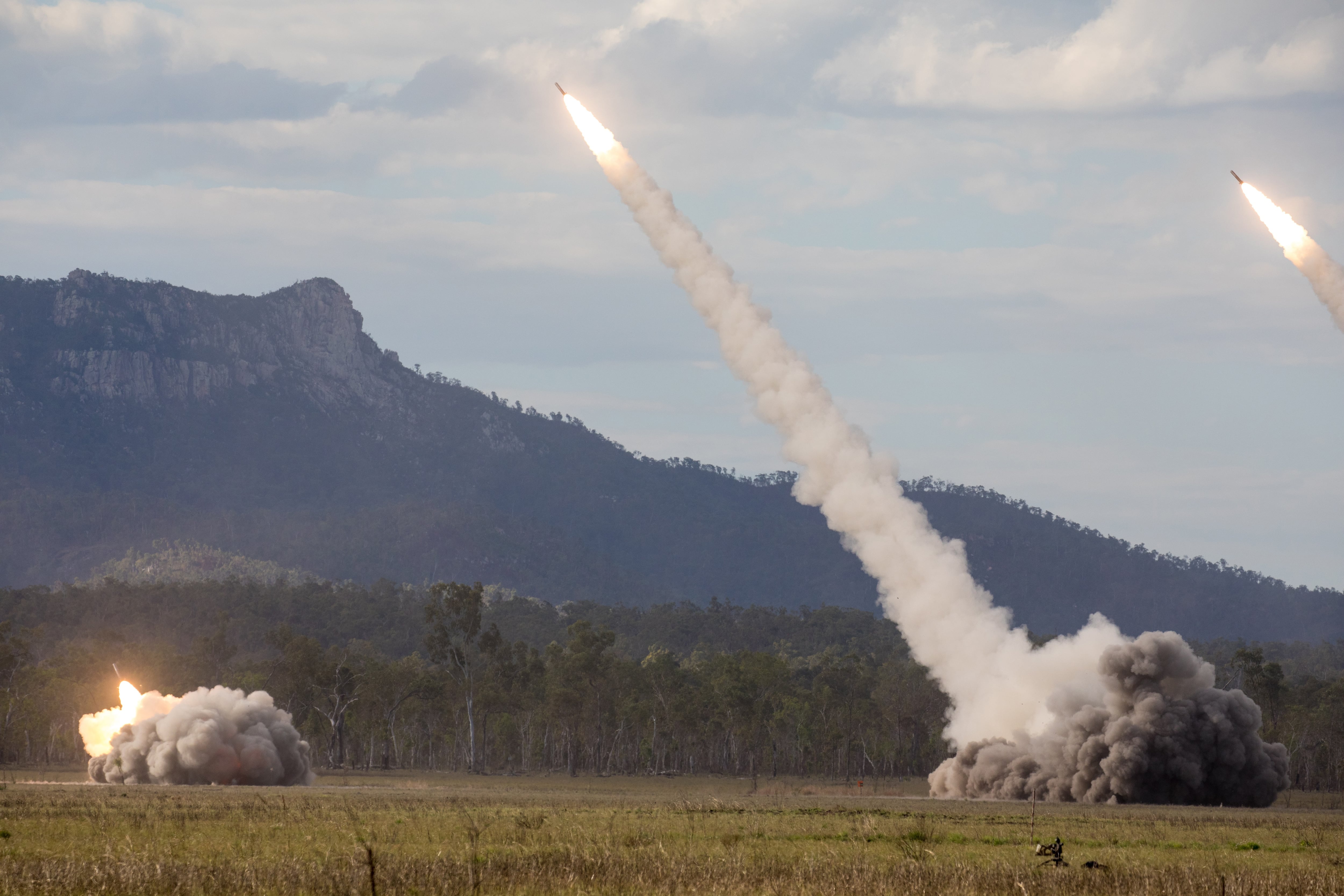As the largest-ever version of the joint military exercise known as Talisman Sabre nears its end this week, the Army has seen its own set of firsts that have converged in two specific units the service sees as leading its future approach to warfighting.
The 3rd Multidomain Task Force, activated in September 2022 out of Fort Shafter, Hawaii, saw its first operational deployment in Talisman Sabre, an exercise in its 10th biennial iteration as a joint U.S.-Australian Pacific theater exercise that has grown to include 13 nations and more than 30,000 troops.
The task force had its first-ever exercise in February, part of Northern Edge 23 held in Alaska, said U.S. Army Pacific commander Gen. Charles Flynn.
Along with the original two members the exercise included France, Indonesia, Japan, South Korea, New Zealand, the United Kingdom, Canada and Germany. This is the first participation for Fiji, Papua New Guinea and Tonga.
Simultaneously, the 1st Multidomain Task Force has worked an extensive deployment for more than six months this year in the Philippines, that’s contributed to this exercise also, Flynn told Army Times.
The 1st Multidomain Task Force was the first such formation for the Army and was activated in 2017. That unit also conducted the first long-range deployment of the Long-Range Hypersonic Weapon over 3,100 miles from Joint Base Lewis-McChord, Washington to Cape Canaveral, Florida, according to an Army release. The 2nd Multidomain Task Force is based out of Europe.
These task forces knit together a range of domains and capabilities that the Army is relying on to fight its first new doctrine, Multi-Domain Operations, in more than 40 years as it shifts the force to the multi-domain operations way of fighting.
Those domains and capabilities include “theater-specific units that employ long-range precision effects, including cyber, electronic warfare, intelligence and long-range fires,” according to an Army release. Within the task force the multidomain effects battalion serves as the “targeting brain” of the force, Flynn said.
“It is creating the interoperability needed with our allies and partners and it is also creating opportunities for the joint force to improve our joint cueing, joint targeting, joint collection and our joint ability to sense, move and communicate, and see, sense and understand what’s actually happening in the environment,” Flynn told Army Times.
The Japanese and Australian militaries are currently adjusting their doctrine to a multidomain approach. The Japanese have pursued a “cross-domain” approach in recent years. Indonesia, the Philippines and other partners are considering such approaches, Flynn said.
There might be a reason for those moves.
Dubbed the “Olympics” of Pacific-based exercises, the event has a build-up phase that’s also very Army-centric. Operation Pacific Pathways, formerly Pacific Pathways, is an ongoing rotation of Army units to do in-country training with partner nations such as Indonesia, which saw U.S. trainers there for training missions Garuda Shield and Super Garuda Shield in recent years.
Led by the Joint Base Lewis-McChord-centered Army I Corps, Pathways dates to 2014 and has grown from short-term, small unit deployments to dispersed brigades coordinating training across multiple partner nations in the Pacific for months or more.
“The end state of Operation Pathways is we are creating joint interior lines,” Flynn said.
The “joint interior lines” refer to a string of defenses between partner nations to push back on Chinese military incursion, such as documented cases of Chinese military provocation in disputed territorial waters of the Philippines, Japan and other Pacific nations.

At the same time, the Joint Pacific Multinational Readiness Center, one of the Army’s newest combat training centers outside of the continental United States in more than 30 years, holds land-based training in Alaska and Hawaii. The center has spent recent years building an “exportable” combat training center model, twice deployed to Indonesia.
The concept uses center training cadre and equipment in a host nation to simulate the wider-ranging field exercises conducted at areas such as the National Training Center in Fort Irwin, California or the Joint Readiness Training Center in Fort Polk, Louisiana — standard pre-combat deployment culminating rotations.
Australia is building out its own combat training center near Lavarack Barracks in Townsville, Queensland, Australia. Japan has its own U.S.-type combat training center in Hokkaido called Yausubetsu Training Area. Indonesia, Flynn said, is in the process of constructing a similar kind of training center.
The 15-day Talisman Sabre exercise is part of a larger, regional effort to counter perceived Chinese military aggression and territorial disregard by Chinese vessels and personnel. The exercise changes the spelling of “Sabre” to “Saber” as it rotates between Australian and U.S. control every other year.
That’s not a simulated scenario either, the Australian Broadcasting Corporation, a news outlet, reported that Australian forces from multiple platforms had photographed a Chinese military spy, identified as “carrying the People’s Liberation Army Navy (PLAN) fleet designation number 793 ship near the Australian coast,” on July 23, the second day of the exercise.
Chief of Joint Operations, Australian Army Lt. Gen. Greg Bilton, told the news outlet that the forces were responding to the spy ship spotting.
“They’ll passively collect, and we’ll adjust — there’s some things we don’t necessarily want to give away and we have methods of being able to employ our forces without giving those more sensitive aspects of our training away,” Bilton said.
Such developments bolster what Flynn told Army Times on July 26 the exercise intends.
Flynn called the scale, varied activities and number of partner nations a strong signal to the Chinese military, calling such exercises the “greatest counterweight” to Chinese military encroachment on partner nation’s territories.
“When (the Chinese military) sees the U.S. partnered with that many countries, conducting the scale and scope of operations, they ought to take note of that and that ought to put some doubt in their minds,” Flynn said.
CLARIFICATION: This article has been updated to accurately reflect the establishment of the Joint Pacific Multinational Training Center as one of the Army’s newest centers outside of the continental United States in more than 30 years.
Todd South has written about crime, courts, government and the military for multiple publications since 2004 and was named a 2014 Pulitzer finalist for a co-written project on witness intimidation. Todd is a Marine veteran of the Iraq War.





